WOMAN IN WILD PLACES
xx
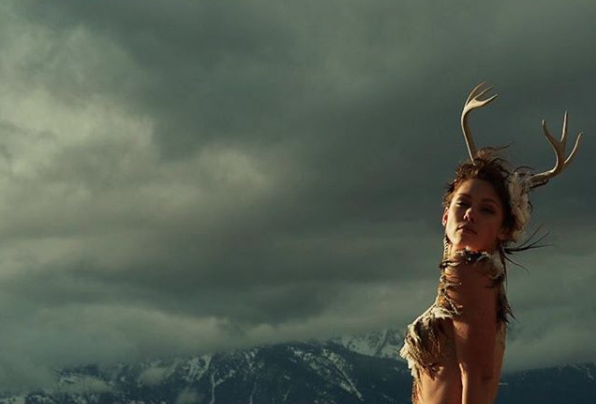
©David Gonzales
xx
Taylor Freesolo Rees is an American photographer, filmmaker, and storyteller. Her middle name is not an alias, but her given name. She will have you check it in her passport. It is also an indication of her connection with nature from childhood on. According to Taylor, her parents were “climbing hippies”, and, no: Taylor does not appreciate climbing free solo herself.
Nevertheless, she is independent, brave, and astute in her photographic and film documentarian projects. Taylor’s artistic vision has a dreamlike quality, a playful intelligence, sometimes with a dark edge, but always gleaming with the gratitude of being alive. Taylor about herself: “I am driven by an insatiable curiosity to explore, listen and share the stories I see beneath the surface.”
Her visual narratives are informed by a flowing Zen quality and stay at all times close to the elemental – skies, mountain ranges, and open spaces. At the same time, she is a reporter on challenging environmental and humanitarian issues. Her first expeditions took her to the open spaces of Greenland, on two Penn State University field trips in 2005 and 2007, where she studied the ecology of Arctic Climate Change.

Since then she has gathered experience and practical knowledge around water restoration (especially in the Pueblo and Navajo reservations of New Mexico), tree planting, salmon fishing (in Haida villages along the Alaska coast), climate change, and food sovereignty in various cultures. Taylor is an approved wildlife guide and a yoga instructor. She also holds a master’s degree in Environmental Anthropology from Yale University.
Assignments as a filmmaker and as a photojournalist have taken her to Myanmar, Iceland, Haiti, the Congo, and many times Nepal. In April 2019, I reached her by phone in Chile where she is documenting the uprising of the Atacama mine workers who supply a large percentage of the lithium demand created by the recent technology boom.
Taylor Rees lives with her husband, the climber, painter, and filmmaker Renan Ozturk, and their husky wolf Baloo near Park City, Utah. They are planning to move to Colorado next year.
(Simon Schreyer, 2019)
xx
✺
xx
xx
xx
Is it fair to say that one of your main concerns in your environmental and photographic work is to strike a balance between being a friend of the earth (to quote the title of a T.C. Boyle novel) and being part of Team Human?
That’s a good way to put it. It most definitely is important to recognize that it is a balance. I think the important thing for us humans is to have an understanding of our connection to and our dependency on a healthy Earth.
As industries evolve, as climate change proceeds, and as the world changes, we are constantly learning and relearning how we can better share the planet with each other and how to have minimal impact and contribute to positive change, as good as we can. So in addition to doing my best in the ways that I can, it also means picking time periods when I check up on those topics and see how they develop and apply to my own life. Every week or two I sit down for a reality check.
What topics did you recently learn something new about?
For example, I used to be a big proponent of electric vehicles and I even purchased an electric car a few years ago. And yet, right now I’m on my way to support two communities in Chile and Argentina who are actively trying to fight lithium mining in their territories as it’s draining the watershed at an unreplenishable rate and taking away their ability to survive in their ancestral lands. The demand and supply of lithium are substantially driven by the electric car industry.
It seems like we all find ourselves in these complexities and contradictions all the time, doesn’t it?
It does! Air travel for my work is by far the worst. These are opportunities for examination. Can I do something differently? Can I do what I need to with less travel? How and in what ways? Can I be of service in some way within this situation? Can I simplify? Questions I ask myself when I attempt in my own life to strike that balance as you say.
How do you handle this paradox?
I will, curiously and relentlessly, never stop the process of learning about these paradoxes and about our relationship to the earth and to each other. Even when it forces me to see the ways I’ve been wrong, even when it makes me uncomfortable, or sometimes overwhelms me with the awareness of daunting insurmountable challenges. There’s no way for any single human to understand the layered complexities of how we are tied together, the externalities of all our consumer products, and everything that goes into our human civilization.
Do you take it as a challenge to cope with a changing world through optimism?
There is excitement in the process of discovering how we can lead better lives. It’s important not to burn out on that effort and on the fact that humanity is going through a tumultuous stage and it’s not any one person’s fault, although we are all a very real part. Still, I try to retain my joy in living, in being human, and reveling in the mystery that we are here and alive and on this wildly beautiful planet in the first place.
xx
xx
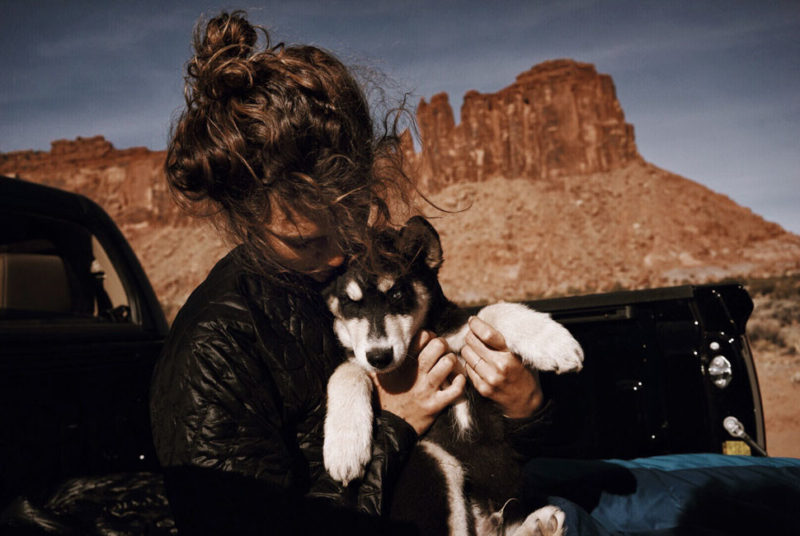
©Renan Ozturk
xx
That’s a good way to go. I recently did some reality check on the topic of man-made Climate Change and listened to the New York Times journalist David Wallace-Wells on an episode of the Joe Rogan Experience. In his recent book The Uninhabitable Earth, he presents a scientifically highly plausible outlook on what it will mean if the Earth heats up by 4, or even 3 °C. After listening to Wallace-Wells, I had a little shock of fear, I basically wanted to call all my friends to tell them, but I didn’t, because I don’t want to appear as a hysterical nuisance. Do you know the feeling?
A lot of things can happen when you talk about this topic to others. Turning people off with what they would call ‘hyper-alarmism’, and possibly receiving harsh criticism for being hypocritical are just a few.
A lot of my friends who work in climate policy, both national and international, probably think I’m the most hysterical of the group (laughs). I admire how they keep moving forward with courage and perseverance and patience for the slow processes of government regulations. I often feel like I want to pull them away from those jobs and work together instead on how we will drastically restructure our societies to buffer the effects of global warming that are already inevitable – like, making a modern Noah’s Arc where we sail and deliver medical supplies and carry drought-resistant seeds – but it feels defeatist.
Writers like Wallace-Wells and Robert Macfarlane and activists like Greta Thunberg give valid reasons to worry. Is worry, or even panic, the adequate reaction?
I guess overall, I think it’s good to have people really connecting to and channeling and communicating what Wallace-Wells is saying because his science and statistics are valid. We are headed towards a worsening of droughts, floods, storms, water resource issues, food insecurity, infectious diseases, and likely increased violent conflict as a result. We’re already experiencing this. So, we need both hard science and maybe truly the hysterics to wake up those not taking it seriously, and we need the calm methodical problem solvers. We need it all.
Those problems are so immediate and so big and they’re not going to be solved in time. And at the same time, there is nothing else to do but try to solve those problems. Yet, despite knowing that we probably won’t reduce carbon emissions in time to avoid 3 or 4 °C, there is nothing else for us to do but try: Try to slow down carbon emissions, improve disaster relief efforts, and for those of us with more stable situations, prepare to welcome the millions of climate refugees who inevitably will need to relocate.
Do you never worry about the dilemma between warning people and turning people off who don’t want to hear about climate change?
Do you mean the dilemma of being hysterical vs staying calm and pretending it isn’t happening, so as not to turn people off? I suppose it is, but I don’t really worry about turning people off. If you communicate to others truly with compassion, and not just to express drama, there will always be a space to have dialogue and figure out where we are all at with this.
There are delicate ways of talking about climate change that don’t downplay the risks but also don’t make people go into paralysis. If you love other human beings, ask yourself: How would I tell my brother, my sister, my mom, or my friends? You’d probably say: “This is real, but I’m with you. We’re all in this together. What are our risks? How can we help?”. Whereas “We’re all gonna die!!!”, probably isn’t going to be the best approach.
xxx
“I try to retain my joy in living, in being human, and in the mystery that we are here in the first place.”
xxx
A subtle way of bringing attention to the environment is through films and stories that are set in nature. With the advent of small and light cameras and drone equipment, really fit and well-equipped explorers, are we in a golden age of outdoors and nature films?
It seems to be, but it also has to do with the diverse ways that independent storytellers can share content. Both nature and adventure, as well as all forms, narrative and non-narrative.
With all the different streaming platforms on the internet that can host so many documentaries and stories, we are able to connect to the perspectives of many more diverse writers and directors. There are new ways for content to expand and it’s not a linear TV experience but a network experience. And I appreciate how social issues are woven into popular streaming series and help us to expand our understanding of the world.
So, I think it’s a golden age for content and storytelling, period.
xx
xx
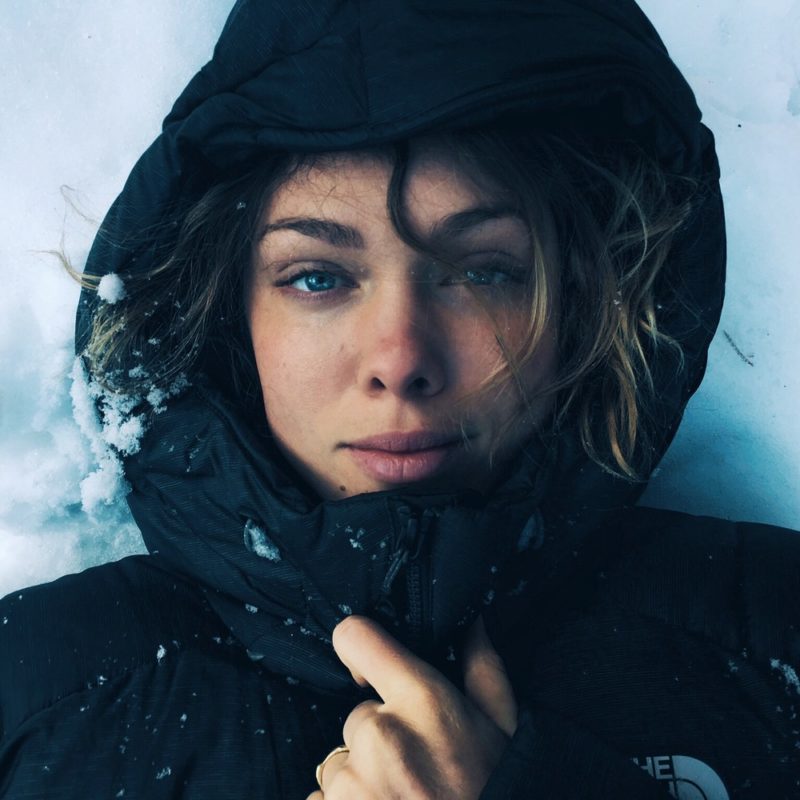
xxx
xx
xx
Do you look at landscapes differently now in comparison to 15 years ago when you were a student of ecology?
When I was on a field ecology assignment in Greenland as a student, I looked at landscapes in the way of ecological connections between the animals, the plants, and climate. My main focus was to collect scientific data and I did a lot of observations and measurements of the natural world. At the same time though I was always photographing what I felt was beautiful.
And now that you are a storyteller?
Now that I’m a storyteller, I look at a landscape primarily for its story, for what it’s saying. And for its beauty. But I still seek out and notice the intricate connections that make up an ecological system. For me looking at the beauty of landscapes and seeing how life interacts within them is fundamentally the same for science as it is for storytelling.
xx
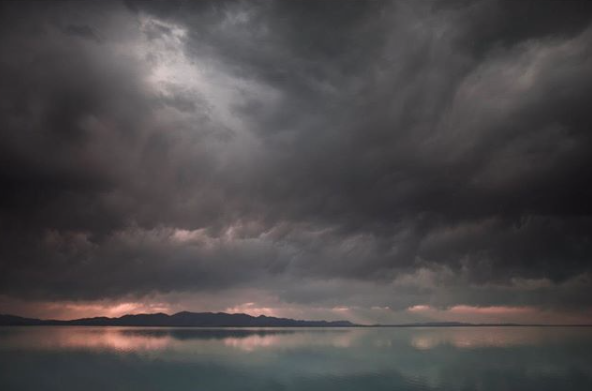
©Taylor Freesolo Rees
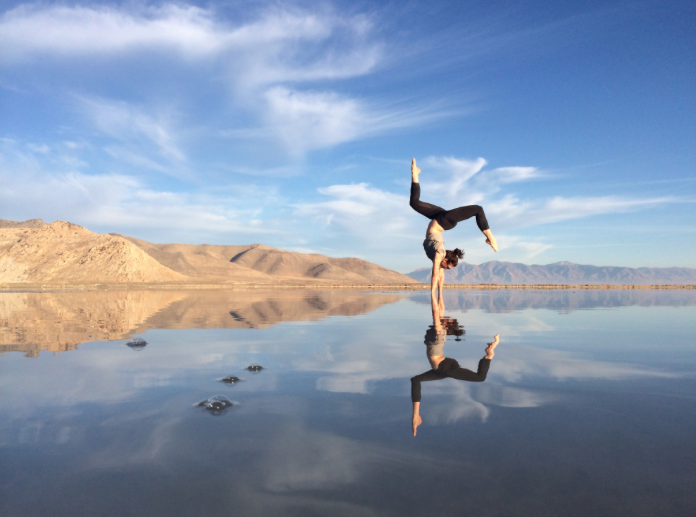
©Renan Ozturk
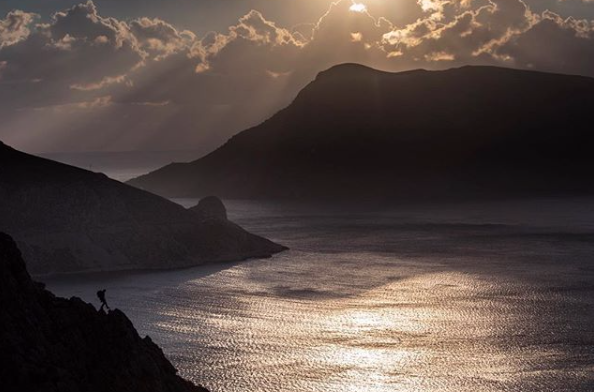
©Taylor Freesolo Rees
xxxx
Can you recall a moment when you disturbed the equilibrium, or even the spirit of a landscape, and nature immediately let you know about it?
I have had a few situations like that, and expect many more if I’m paying close attention! When we are in nature, it is always a reciprocal process: we are observing and sensing the living world and in turn, it is observing and sensing and responding to us. Where ever I go in nature, especially alone, I have that awareness that while seeing, I’m being seen. It helps me to notice the ways my presence affects my surrounding. Both positively and negatively.
I remember a climbing trip to Kalymnos in Greece, where I found this goat skull. It was sun-bleached and perfectly preserved, so I picked it up to examine and decided to take it up to our crag spot to show Renan. He said: “Cool, but can we climb again now?” Without thinking I just put it down at the foot of the wall. That very moment, the sky got dark and the wind started whipping and howling. Our rope flung off the wall.
Even if you happened to be a person not very interested in forms of spirituality, it would have been hard not to feel that something was being upset by the moving of the goat skull. We packed up for the day and I scampered down to that overhanging rock to put the goat skull exactly where I found it, guiding its gaze in the same northwest direction over the sea. Almost immediately, the wind quieted down.
How essential is yoga to your lifestyle?
So essential! I can’t be happier about having found yoga. Yoga has an image problem and so many assumptions around it, I think, where you’re expected to be a certain way if you are into it. But for me, it’s just slow intentional moving and breathing. It allows me to really get into my body and calm my mind into an integrated state. I was lucky to have really good yoga teachers who helped me to find that ability to do that for myself.
Yoga changes my entire perception of my day and of my life, and about who I am. After a yoga class, I am much more accepting of the fact that I am just a human being. All the things that make me feel good or bad or anxious fall into place, being part of it all. I can be with whatever is happening: And with that comes the realization that I’m okay as long as I manage to stay with my breath, and to stay centered and sentient.
Which styles of yoga do you practice?
I practice all styles. I travel so much that I look for various classes anywhere. I have a teacher certification for Vinyasa flow, but I am also into Anusara and Ashtanga, Shadow yoga, and Lila yoga. For restoration, I do Yin yoga.
xx
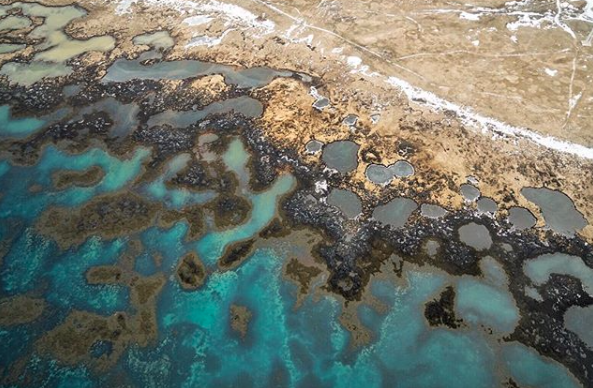
©Taylor Freesolo Rees

©Renan Ozturk
xxxx
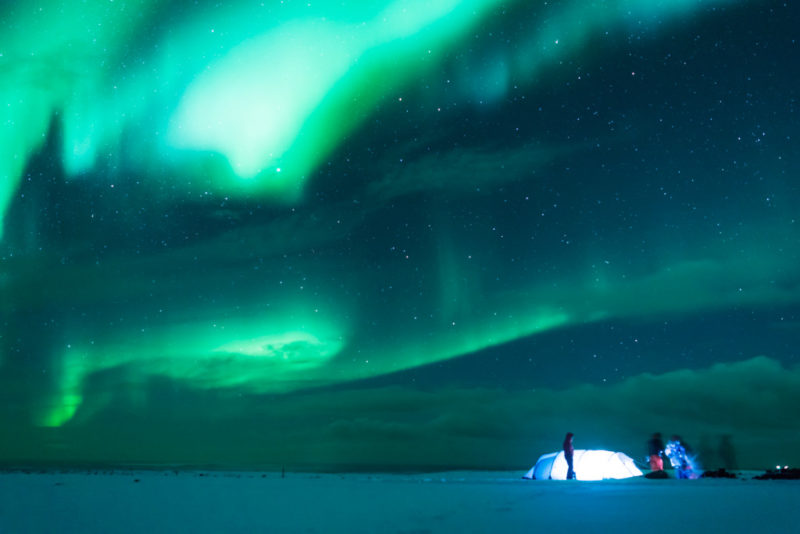
©Taylor Freesolo Rees
xx
In 2014 you were part of a National Geographic expedition to find the highest peak in Myanmar. The documentary covering this trip shows you giving yoga classes to the locals along the jungle trek. I noticed the playfulness and enthusiasm with which they picked up on your practice. Do you regard yoga as a nonverbal form of communication in the absence of a common language?
I feel like all cultures have not only forms of dance but also practices of healing. I don’t really know much about the history of yoga in that region, but when I was there, the Burmese porters, young men, and women, just saw me doing yoga and they came over and asked if they could join in. It’s easy to follow, even if you don’t speak the same language. I have practiced yoga with strangers almost everywhere I go. Just as a way to breathe, relax, and laugh together. It is the perfect tool to communicate with.
xxxx
“It’s those hidden aesthetics of life, that make us want to create and protect beautiful places.”
xxxx
xx
What did both parties learn in the so-called Exchange Lessons on the trek through the Burmese jungle on that expedition?
What we learned was a lot about the current situation that those villagers were, and still are, going through. We had no idea about any of that before the knowledge exchange evenings, sitting around a fire with a translator just openly asking each other questions and sharing. We learned that while yes, a lot of these village communities have over-harvested and over-hunted the wildlife of the jungle, the recent government’s ban on hunting was done in such a way that was without their inclusion and made it very difficult to adapt economically.
It’s common around the world that rural communities don’t often get to be part of the rehabilitation of their own environment. These communities have no hand in the creation of national parks which are being created around them, excluding them as participants.
So, the villagers are excluded from their old ways and modernity at the same time?
Exactly. While the setting up of national parks and regulations is important for the ecosystem, the villagers along these ancient jungle paths have to fear for their livelihood. They wanted to be able to be the hosts for trekkers if tourism arrived but they feared that the government would kick them out.
During these Exchange Lessons, expedition writer Mark Jenkins and our expedition leader Hilaree Nelson took notes and put pen to paper later to inform the government about the villagers’ fears and uncertainties.
And what did they learn from you?
(Laughs) Basically that we were a walking junk show of mountaineers (the expedition had to cut provisions and materials to proceed to the mountain without finding enough porters among the village people; Ed.). We were so out of our element and trying so hard to get to the mountains. Everyone on our team was super respectful and grateful to be in those villages, but we were also on a special mission to find out whether this mountain, Hkakabo Razi, was actually the highest in Southeast Asia.
What did they think of your mountaineering mission?
They learned about how important a mission like that was for us, and what a mountaineering team is. Why we do what we do. There even was an older Burmese guide who tried to follow us and climb with the team. He was about 70 years old and had a stick instead of an ice axe. At a certain point, he had to turn around, but the general spirit among the locals was encouraging: They very much wanted us to succeed in our effort.
xx
xx
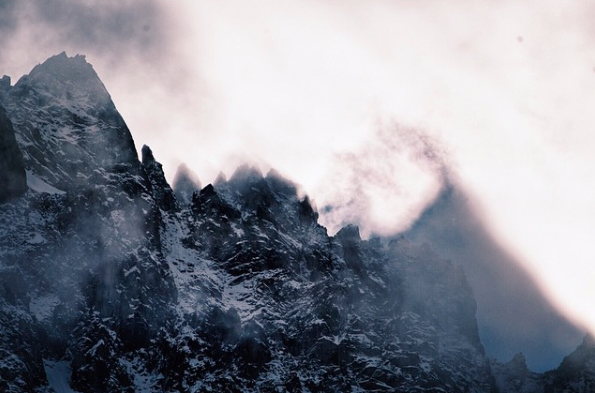
xxxx
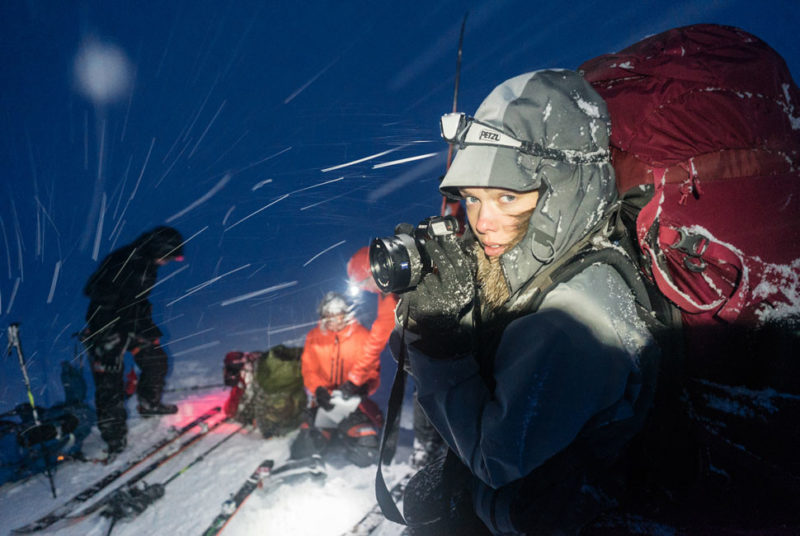
©Renan Ozturk
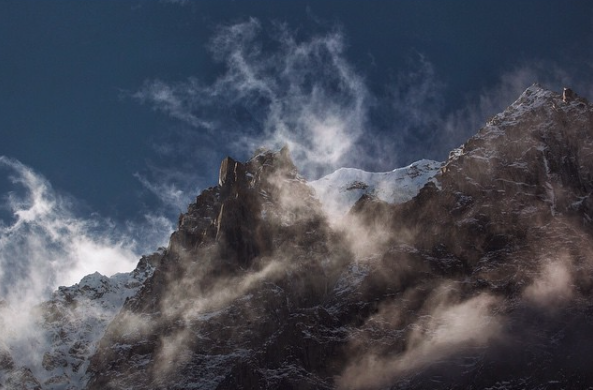
xx
While the rest of your team tried to reach the peak in vain, you stayed behind with some of the porters. Can you describe your moment of culture shock at the climbing team’s return from Hkakabo Razi after you had waited at Base Camp with the locals?
Had the summit team been gone for only two or three days, that would have been one thing, but I was without anybody who speaks English for two weeks. Our translator left unexpectedly. We were in a survival situation with winter storms at 15,000 ft (4570 m).
The porters and I were building stone walls against the wind. We were constructing extra shelters out of tarp. I had given away every strip of clothing that the team had left behind to the freezing porters and told all of them they should return to their villages if they didn’t feel comfortable and we would pay them in full.
I had even parted with my only pair of gloves and my fingers became covered in blisters from the cold. We were really fighting our own battle and I felt responsible for our porters who were neither used to nor prepared to live at that altitude.
What happened when the climbers came back to BC?
At the end of these two weeks, there were only seven locals left out of the original twenty. Tellingly, these were the same people who joined me in my yoga practice.
And when the team came back from the failed summit push, traumatized by not having reached the peak and having lost their unifying spirit, I was already embedded in another reality. Their defeat seemed like the most irrelevant thing in the world to me at the time (laughs). It took me a couple of days to come back around from that.
Simplifying life seems to be the one challenge for Westerners. How do you simplify?
That would be my goal in life too. I think that it would make my life so much happier, so much healthier, and so much more connected to what I care about: the Earth, my friends, and loved ones… but honestly, if you make the passionate career choice to be a filmmaker, that might be the least “simple” thing there is. It requires even more equipment and maddening logistics than photography. And a lot of travel.
Often I think I should stop, just lay low, not even look at my Instagram and grow tomatoes and basil in my backyard, work on something close to home. But I just love this work so much. We humans are complex beings who crave simplicity, but we also want to create and engage in things. I am just in the middle of that conflict right now (chuckles).
The North Face founder Doug Tompkins (echoing Dostoevsky) once remarked: “If anything can save the world, I’d put my money on beauty.” How important is it for you to bring the beauty of nature to your audience?
I love that quote! Did you read that recent New York Times article about how the capacity to appreciate beauty is ingrained in most animals? Colorful feathers among birds, for example, can be perceived as signs of potent sexuality and good health. But recently, scientists discovered, that animals chose certain decorative physical elements simply because they are beautiful: Pure aesthetics and preference.
The love of what’s beautiful to me is deeply personal. It gives me a lot of intention, desire, and drive to find aspects of beauty within human life, in a landscape, or in a way to incorporate that beauty in my own life. It’s like an indescribable phenomenon that we don’t even know how to talk about rationally.
It’s those hidden aesthetics of life, that make us creative and that make us portray and protect the beauty of wild places. Even without us always knowing it, beauty is at the core of so much.
xx
xx
xx
Links:
xx
xx
✺ ✺ ✺
xx
xx